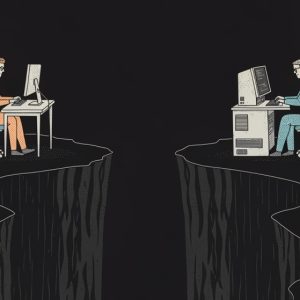
When organisations commit to reducing their carbon emissions, their primary focus is usually their energy consumption. But as much of 44% of the world’s emissions are produced during the creation and use of manufactured products. This is why the concept of the ‘circular economy’, in which products are reused and recycled to the greatest possible extent, is a vital component of the net zero agenda.
At the recent Making Sense of Net Zero virtual forum, Tech Monitor spoke to Katie Schindall, leader for the circular economy at event sponsor Cisco, about how the ICT sector can improve its own reuse of resources and how technology can catalyse the circular economy across sectors. Schindall began by explaining why establishing a circular economy can both reduce climate risk and create economic opportunity.
Register to watch the full interview on demand.
Technology and the circular economy: how can the ICT sector improve material reuse?
As a high-tech manufacturer, Cisco is aiming to increase the reuse of its products and recycling of the materials it uses to make them. To achieve this, it is optimising the design of its products, Schindall explained. A recently developed server, for example, was designed so that it can be disassembled without tools, allowing greater reuse and recycling of components, Schindall said. “I’ve actually had this experience of being in a recycling facility and hunting for screwdrivers and finding hidden screws underneath panels that you didn’t think there were, and so it takes you way longer than it should to disassemble something.”
Another focus is to make sure products are returned to Cisco once customers have finished using them, so the company can extend their life or reuse their parts. Ninety-nine per cent of the company’s products are recycled or reused, Schindall explained, but its aim is to increase reuse, as the process of recycling bears its own carbon footprint. “We want to keep it at the reuse stage more than the recycling stage,” she said
How can technology support the circular economy?
While there is work to be done in increasing reuse and recycling of ICT equipment, digital technology has a role to play in establishing the circular economy across all sectors. Optimising manufacturing processes for maximum reuse and tracing the embedded emissions in components and materials are both information problems that data and automation can help to address, Schindall said.
For more on technology’s role in the circular economy, including how IT buyers can promote reuse and recycling, register to watch Tech Monitor‘s full interview with Katie Schindall on demand.
Home page image by YouraPechkin/iStock






